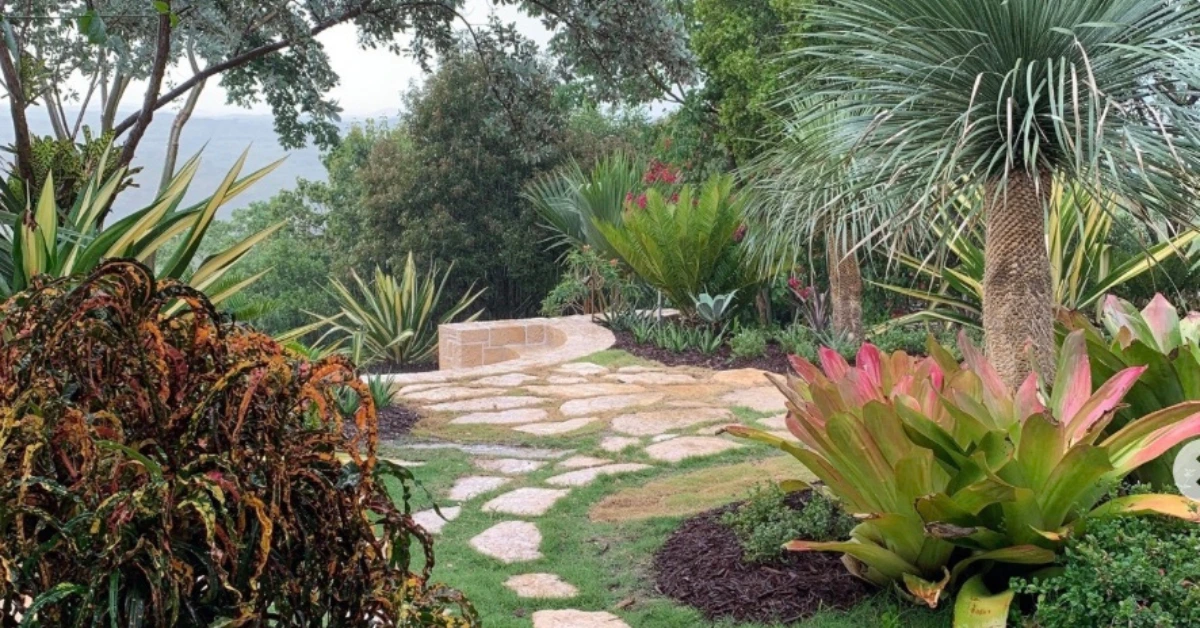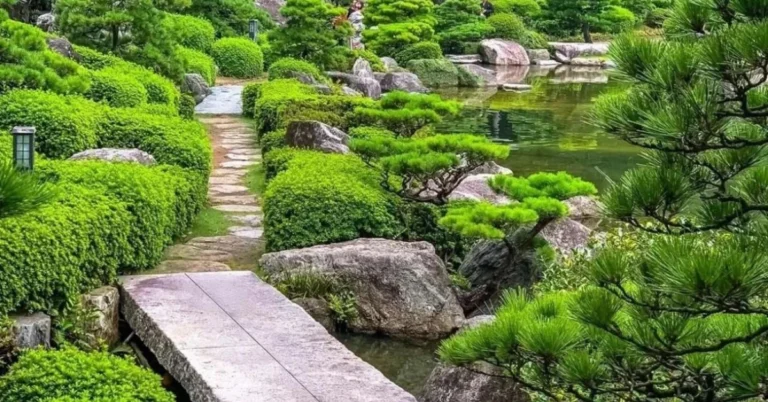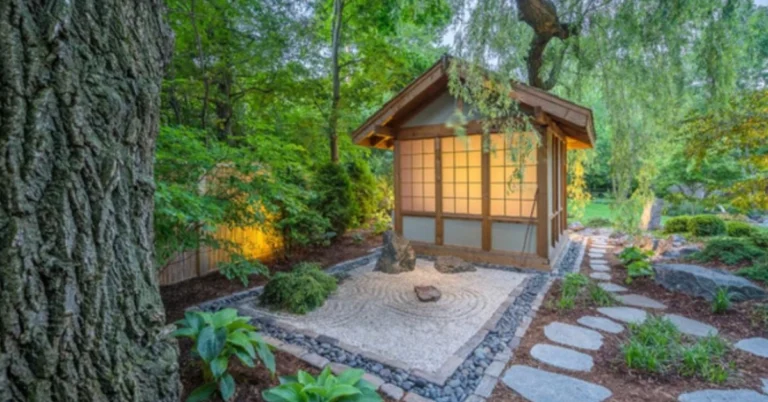Step into the haven of your mind, where tranquility blooms like flowers in a secret garden of meditation. In the hustle of life’s chaos, finding solace within ourselves can seem like an impossible quest. But within your very being lies a lush and vibrant garden of meditation waiting to be explored. It’s a place where stress withers away, and clarity blossoms.
Find out what a garden of meditation is, how to design your own garden and not to forget – also maintain your garden. Since I created my own garden of meditation, meditating is even more fun than before.
Pros ✅
✅ The cushion set includes an extra free cover
✅ Filled by 100% top-grade buckwheat hull
✅ Layer of foam offers a soft landing
Cons 🚫
🚫 The velvet cover may not be as durable as the cotton cover
🚫 The cushion may be too firm for some users
Never heard of Garden of Meditation? No problem…
Meditation gardens are designed to provide a peaceful environment for people to meditate and relax. These gardens are typically quiet, secluded spaces that are designed to promote mindfulness and relaxation. They are often filled with plants, flowers, and other natural elements that are believed to have a calming effect on the mind and body.
When designing a garden of meditation, it is important to consider the needs and preferences of the person who will be using it. Some people prefer gardens that are minimalist and simple, while others prefer gardens that are lush and vibrant. The key is to create a space that feels comfortable and inviting.
One of the most important elements of a meditation garden is the seating area. This area should be comfortable and provide a clear view of the garden. It should also be positioned in a way that allows the person using the garden to feel connected to nature.
In addition to plants and seating areas, meditation gardens may also include other elements such as water features, statues, and other decorative elements. These elements can help to create a sense of tranquility and serenity in the garden.
A garden of meditation is a wonderful way to create a peaceful and relaxing space in your home or yard. Whether you are an experienced meditator or simply looking for a quiet place to relax, a meditation garden can provide the perfect environment for you to unwind and connect with nature.
Why Install A Garden Of Meditation?

Meditation gardens are designed to provide a peaceful and calming environment for individuals to practice meditation. These gardens are typically designed with various elements such as water features, natural stones, and plants that are known for their therapeutic properties. Here are some of the benefits of meditation gardens:
- Stress Reduction: Meditation gardens are an excellent way to reduce stress levels. The calming environment and natural elements of the garden help individuals to relax and let go of their worries and anxieties.
- Improved Focus: Practicing meditation in a garden can help improve focus and concentration. The natural elements of the garden help individuals to connect with their surroundings and stay present in the moment.
- Enhanced Creativity: Meditation gardens can also help enhance creativity. The peaceful environment and natural beauty of the garden can inspire individuals to think creatively and come up with new ideas.
- Improved Sleep: Spending time in a meditation garden can also help improve sleep quality. The calming environment and natural elements of the garden can help individuals to relax and fall asleep more easily.
- Increased Self-Awareness: Meditation gardens can help individuals to become more self-aware. The peaceful environment and natural elements of the garden can help individuals to connect with their inner selves and gain a better understanding of their thoughts and emotions.
A garden of meditation is an excellent way to improve mental and physical health. They provide a peaceful and calming environment that can help individuals to reduce stress, improve focus, enhance creativity, improve sleep, and increase self-awareness. Maybe you want to deepen your self-love journey in your garden of meditation?
Designing Your Own Garden of Meditation
As someone who has been practicing meditation for years, I have found that having a dedicated space for meditation can greatly enhance the experience. That’s why I decided to design my own meditation garden. Here are some tips on how to create your own:
Choosing the Right Location
The first step in designing your meditation garden is to choose the right location. Look for a quiet spot in your yard that is away from any distractions. It should be a place where you can feel relaxed and at peace. Some things to consider when choosing a location include:
- Sunlight: Make sure your garden gets enough sunlight. Most meditation gardens benefit from full or partial sun exposure.
- Privacy: Choose a spot that is private and secluded. You don’t want to be disturbed by neighbors or passersby.
- Access: Make sure your garden is easily accessible. You don’t want to have to trek through your yard to get to it.
Selecting Plants and Elements
Once you have chosen the location for your garden, it’s time to start selecting plants and elements. Here are some things to consider:
- Plants: Choose plants that are calming and soothing. Some good options include lavender, chamomile, and jasmine. You may also want to consider adding a water feature, such as a fountain or pond, to your garden.
- Seating: Make sure you have a comfortable place to sit. A bench or a set of chairs can be a great addition to your garden.
- Pathways: Consider adding a pathway to your garden. This can be made of gravel, stone, or wood chips.
Remember, the key to designing a meditation garden is to create a space that is peaceful and calming. With the right location, plants, and elements, you can create a beautiful and tranquil space where you can practice meditation and find inner peace.
Maintaining a a Garden of Meditation

Routine Care
As an owner of a meditation garden, I understand the importance of maintaining its beauty and tranquility. Routine care is essential to keep the garden in good condition. Here are some tips for routine care:
- Watering: Regular watering is crucial to keep the plants healthy. I water my garden once a day in the morning to avoid water evaporation during the day.
- Pruning: Pruning helps to maintain the shape of the plants and encourages new growth. I prune my garden once a month to keep it looking neat and tidy.
- Weeding: Weeds can quickly take over a garden and spoil its appearance. I weed my garden once a week to keep it free from unwanted plants.
- Fertilizing: Fertilizing is necessary to provide the plants with essential nutrients. I fertilize my garden once every two months to keep the plants healthy.
Seasonal Upkeep
Seasonal upkeep is essential to ensure that the garden remains beautiful throughout the year. Here are some tips for seasonal upkeep:
- Spring: Spring is the time when most plants start to grow. I prune my garden in early spring to remove any dead branches and encourage new growth. I also add a layer of compost to the soil to provide the plants with essential nutrients.
- Summer: Summer is the time when the garden is in full bloom. I water my garden more frequently during this season to keep the plants hydrated. I also deadhead the flowers to encourage new blooms.
- Fall: Fall is the time when the leaves start to change color and fall off the trees. I rake the fallen leaves and add them to my compost pile. I also prune my garden in late fall to prepare it for winter.
- Winter: Winter is the time when most plants go dormant. I cover my garden with a layer of mulch to protect the plants from the cold weather. I also prune any dead branches and remove any debris from the garden.
Maintaining a meditation garden requires time and effort, but the rewards are worth it. By following these tips, I can ensure that my garden remains beautiful and peaceful throughout the year.
Examples of Garden of Meditation
Japanese Zen Gardens

One of the most popular types of meditation gardens is the Japanese Zen Garden. These gardens are designed to create a peaceful and tranquil environment that is conducive to meditation. They typically feature a combination of sand, rocks, and plants arranged in a way that is aesthetically pleasing and calming.
In a Japanese Zen Garden, the sand is often raked into patterns to represent the flow of water or the movement of waves. The rocks are carefully placed to create a sense of balance and harmony, and the plants are chosen for their simple beauty and ability to thrive in a Zen garden environment.
Therapeutic Gardens

Another type of meditation garden is the therapeutic garden. These gardens are designed to promote healing and relaxation for people who are dealing with physical or mental health issues. They are often found in hospitals, nursing homes, and other healthcare facilities.
Therapeutic gardens typically feature a variety of plants and flowers that are chosen for their therapeutic properties. For example, lavender is known for its calming effects, while peppermint is believed to help with digestion and headaches. The gardens may also include features like waterfalls, ponds, and walking paths to provide a peaceful and calming environment for patients and visitors alike.
There are many different types of meditation gardens that can be designed and enjoyed. Whether you prefer the simplicity of a Japanese Zen Garden or the therapeutic benefits of a healing garden, there is sure to be a garden that is perfect for your needs.
What is a Garden of Meditation, and how does it differ from traditional meditation spaces?
A Garden of Meditation is an outdoor space intentionally designed for meditation and contemplation. Unlike traditional indoor meditation spaces, it harnesses the healing and calming power of nature. These gardens are carefully crafted to create a serene and harmonious environment, providing a unique setting for meditation and mindfulness practices.
What elements are typically found in a Garden of Meditation, and how do they enhance the meditation experience?
Elements commonly found in a Garden of Meditation include lush greenery, flowing water features, stones or sculptures, and comfortable seating. These elements harmonize with nature, promoting a sense of calm and tranquility. The sounds of water and rustling leaves, the scents of flowers and earth, and the visual beauty of the garden all contribute to a deeper and more immersive meditation experience.
Can anyone use a Garden of Meditation, or are they typically associated with specific spiritual or religious practices?
Gardens of Meditation are open to anyone, regardless of their spiritual or religious beliefs. They are inclusive spaces designed to provide a peaceful environment for anyone seeking serenity, reflection, and inner peace. While some gardens may have cultural or religious associations, many are secular and accessible to all individuals seeking mindfulness and relaxation.
How can I incorporate a Garden of Meditation into my daily meditation practice?
To incorporate a Garden of Meditation into your practice, designate a regular time to visit the garden. Find a comfortable spot, either sitting or walking, and use the natural surroundings as a focal point for your meditation. You can engage in mindfulness, loving-kindness, or other meditation techniques in this serene outdoor setting, allowing the garden’s beauty to deepen your practice.
If you liked this blog article about Garden of Meditation, don’t forget to follow us on Pinterest so you don’t miss any more meditation news!






